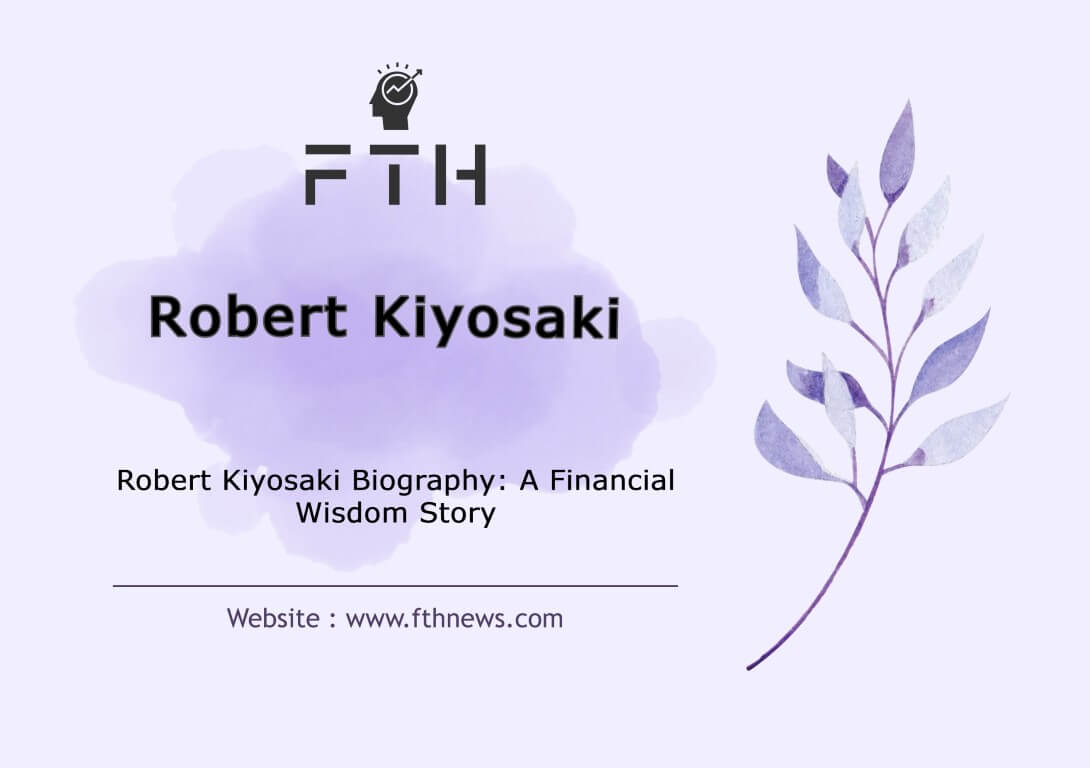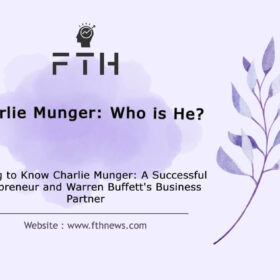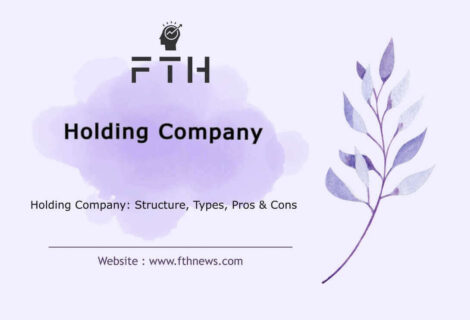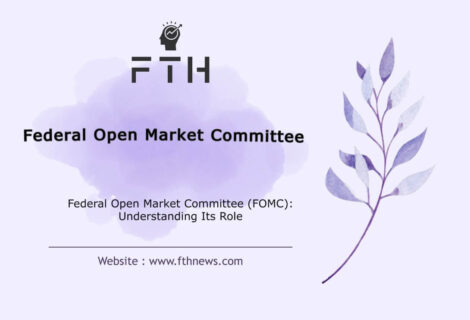
Robert Kiyosaki Biography: A Financial Wisdom Story
The business world is teeming with individuals who defied conventional wisdom and achieved remarkable success. Robert Kiyosaki is one such maverick entrepreneur who introduced a novel perspective to the realms of investment and business.
With a repertoire of over 26 books on personal finance education translated into at least 25 languages, Kiyosaki’s influence extends far and wide. Notably, luminaries like Anthony Robbins have shared their insights in his seminars and classes. In this article, we delve into the life and philosophies of this financial luminary.
Robert Kiyosaki:
“Never doubt your capabilities. It’s not ignorance but a lack of confidence that holds us back.”
Where is Robert Kiyosaki from?
Robert Kiyosaki, also known as Robert Toru Kiyosaki, is a Japanese-American hybrid, born on April 8, 1947, in Hawaii. As he candidly revealed in his seminal work, “Rich Dad, Poor Dad,” his biological father, Ralph A. Kiyosaki, held a doctoral degree and pursued an academic career. His mother, Marjorie A. Kiyosaki, was a nurse. Robert has two sisters, Amy and Beth, and a brother, John. His wife’s name is Kim Kiyosaki. Yet, a pivotal figure profoundly impacted Robert’s life and has resonated with countless individuals worldwide – his godfather. Unlike his biological father, Robert’s godfather lacked a university education and completed his formal education only up to the eighth grade. Nevertheless, Robert affectionately refers to him as his “rich dad” and has diligently applied his mentor’s business teachings throughout his life.
Why Did Robert Kiyosaki Become Famous?
Robert Kiyosaki was a relatively unknown figure until his return from the Vietnam War. His journey to fame commenced when he ventured into the realm of financial education. Drawing from the financial philosophies inherited from his “rich dad” and his own business experiences, he embarked on the path that would eventually solidify his reputation on a global scale.
The Birth of Robert Kiyosaki’s Success
Robert Kiyosaki’s journey to prosperity was far from a smooth one. A lack of capital didn’t deter him; instead, he took a different path. He started sharing his market insights and experiences, helping people and students navigate their way out of financial hardships through lectures and discussions on economic and investment topics.
He ventured into personal development seminars, particularly the “Money & You” program, which marked a pivotal moment in his life. Speaking and teaching on economic matters led him from an unsuccessful life to one filled with success. One of the key catalysts in this transformation was his encounter with Richard Buckminster Fuller, known as the “grandfather of the future.”
During an interview, Robert acknowledged Fuller as one of the world’s greatest geniuses, emphasizing the significant impact Fuller had on his money and entrepreneurial philosophy. He recounted that until 1981, he was an entrepreneur driven solely by the pursuit of wealth, willing to compromise ethical principles for monetary gain. However, the changing circumstances and Fuller’s wisdom sparked a shift in Robert’s perspective. It was at that point that he realized the importance of working for the betterment of all, rather than just personal gain. This realization represented a profound turning point in his life.
A Glimpse into Kiyosaki’s Business Ventures
Upon returning from the war and departing from the military, Robert initially worked as a salesperson for Xerox Corporation for a number of years. However, in 1974, while still employed at Xerox, he ventured into the world of real estate by establishing his first company. This enterprise grew, and today he boasts ownership of more than 1000 apartment units, generating a monthly income exceeding one million dollars, according to his claims.
Unsatisfied with the status quo, Robert decided not to leave his money sitting idly in the bank. During this period, while selling Xerox machines, he attended educational seminars offered by “Erhard.” Participating in these seminars proved transformative for him. In 1977, Kiyosaki founded a company specializing in marketing men’s wallets made from a combination of nylon and Velcro. This product eventually evolved into a multi-million-dollar global success. However, this prosperity was short-lived, as the company eventually faced bankruptcy.
Undeterred by setbacks, Robert shifted his focus to a retail business, dealing in items like t-shirts and hats. Unfortunately, this venture also experienced bankruptcy in 1980. Kiyosaki’s journey took another turn when he acquired Erhard Educational Seminars, a renowned company in the United States. Leveraging its existing fame, he introduced educational programs in the domains of business, entrepreneurship, and investment. Eventually, Robert Kiyosaki sold the company in 1994, marking another chapter in his ever-evolving career.
Kiyosaki Started Writing
Robert Kiyosaki’s journey into the world of publishing began with the release of his book “If You Want to Get Rich Don’t Go to School” in 1992. A few years after this initial foray into writing, he established Kiyosaki CashFlow Technologies, a company focused on business and financial education. The primary source of income for his company came from conducting educational seminars, a platform through which he could share his wealth of knowledge and insights.
In the subsequent years, Kiyosaki continued to pen more books, further enhancing his reputation and reach. Notably, his most famous work, “Rich Dad, Poor Dad,” was published in 1997, marking a turning point in his career. The success of this groundbreaking book propelled him to establish the “Rich Dad” company, which quickly gained international recognition.
Kiyosaki’s retirement from active business endeavors in 1996, at the age of just 47, was a testament to the financial principles he had been advocating. He had achieved a level of financial freedom that allowed him to step back from active work while continuing to generate income from his various investments.
During his retirement years, Kiyosaki made astute investments in three publicly traded companies involved in oil, gold, and silver exploration. These investments proved highly profitable and contributed to his growing wealth. In particular, his 1997 book, “Rich Dad, Poor Dad,” served as a catalyst for establishing the “Rich Dad” company, an international educational institution that imparts business and investment knowledge to students across seven countries. The company has since gathered tens of thousands of eager learners seeking to emulate Kiyosaki’s financial success.
Robert Kiyosaki’s Website
The official website of Robert Kiyosaki’s financial empire, “https://www.richdad.com,” is the online home of the Rich Dad Company. In this collaborative endeavor, Robert Kiyosaki and his wife, Kim Kiyosaki, work side by side. Notably, Kim has authored two books herself, namely “It’s Time to Grow Up Girl!” and “Rich Woman,” both of which have been published and contribute to the wealth of knowledge available through their platform.
The Tale of Robert Kiyosaki’s Homelessness
The year 1985 marked a period of homelessness and profound financial hardship for Robert and his wife, Kim. Struggling financially, their savings had dwindled, and their credit cards had reached their limits. Their entire existence became confined to the cramped quarters of an old brown Toyota. After enduring two weeks of homelessness, a friend extended a lifeline by allowing them to take refuge in the basement of his house.
“At that time, the lack of income was our most pressing concern,” Kim Kiyosaki recalls. Friends and well-wishers urged them to secure stable employment with a fixed monthly salary, believing it was the sensible course of action. But Robert and Kim had a different vision. They were determined to create something of their own.
In their pursuit of financial stability, Robert embarked on a journey of teaching courses, leveraging his expertise to educate others. Meanwhile, Kim ventured into the realm of marketing, working in a friend’s clothing production line. She visited beauty salons and opened small boutiques, her income contingent on commissions rather than a steady salary. The hardships were palpable, but their determination was unwavering.
Kim reflects, “Throughout the challenges, I viewed everything through an entrepreneur’s lens, which helped me navigate the difficulties.” This perspective empowered her to persist and persevere, even when the road seemed arduous.
The Kiyosaki family’s financially strained circumstances did not persist for long. In 1998, their fortunes took a dramatic turn as they achieved millionaire status. This transformation coincided with the establishment of Robert Kiyosaki’s company, Pedr Puldar, marking the start of a new chapter in their financial journey.
Who Was the Real Rich Dad?
The book “Rich Dad, Poor Dad” stands as a groundbreaking best-seller in the realm of personal finance, shattering Amazon records and reaching audiences worldwide. Translated into over 80 languages, including Farsi, this book introduced the world to the enigmatic character of the rich father, who has since become one of the most influential financial advisors in modern history.
For the longest time, the identity of the rich father remained a well-guarded secret. Readers around the world pondered, who was this real-life financial sage, and was he as renowned in Hawaii as he was on the global stage? Robert Kiyosaki, the book’s author, maintained a tight-lipped approach to this mystery.
It wasn’t until a revealing radio interview in his hometown, with Rich Dad’s son in attendance, that Robert Kiyosaki confirmed the real identity of the rich father. The rich father’s true name was “Richard Wassman Kimi” (often shortened to Richard Kimi). This revelation sent shockwaves through the financial community, and many embarked on a quest to uncover more about this elusive figure.
In Hawaii, Richard Kimi had achieved legendary status as a pioneer in the hotel and tourism industry. Known for his impeccable reputation, remarkable business acumen, unwavering courage, extraordinary generosity, and, of course, immense wealth, he was affectionately hailed as the hero of Hawaiian tourism. His contributions were far-reaching, as he played a pivotal role in driving business prosperity and increasing wealth throughout the region.
The revelation of Richard Kimi’s identity not only shed light on the real-life inspiration behind the “Rich Dad” character but also deepened the appreciation of his legacy in Hawaii and the broader world of financial education.
Robert Kiyosaki:
“The more you perceive money as a tangible entity, the harder you toil for it. Realize that money is a construct, and your path to wealth will become more accessible. Remember, money is not real!
The Story of the Rich Father Game
Teaching the intricacies of money management through games was a brilliant idea that took root in Robert Kiyosaki’s mind. After all, practical experience is often the best teacher, and what better way to gain that experience than through a game? Kiyosaki’s brainchild in this endeavor was the “Cashflow” game.
Cashflow Game: A Global Sensation
The impact of the Cashflow game was swift and profound. The New York Times, a notable source of global news and insights, recognized its significance, stating:
“Cashflow is a groundbreaking game designed to educate people on investing and wealth creation, and it’s poised to garner a dedicated following worldwide.”
Understanding the Mechanics of the Cashflow Game
The Cashflow game comprises a board, dice, cards, balance sheets, and a wallet. On the game board, players encounter two distinct paths: the “rat race” and the “fast track.” The game is designed for a minimum of two and a maximum of six players.
Participation in the game requires players to maintain their financial statements in pencil on designated sheets, diligently updating them after every roll of the dice. Additionally, players are tasked with recording their income and expenses on an inventory sheet.
The game mirrors real-life financial challenges, where players receive a monthly paycheck after deductions for expenses like bank charges and loan repayments. This income is accompanied by a visual representation of a cash balance and updated financial statements. Players must make decisions about buying, selling, and investing based on their financial situation, just as they would in the real world.
Moreover, players can opt to take out loans or allocate funds for education and child growth. The essence of the Cashflow game lies in its ability to simulate real-world financial scenarios, enabling players to enhance their financial intelligence and cultivate sound decision-making skills pertaining to income and capital management.
In essence, Cashflow is a powerful tool for those aspiring to improve their financial literacy and embark on the path toward financial success. This game effectively combines fun and learning, making it an invaluable resource for anyone seeking to master the art of money management.
Richard Kimi’s Vision
In the mid-1950s, a young Richard Kimi, aged just 29, embarked on a remarkable journey. His vision was clear. He saw rich foreign tourists coming to Hawaii for fun and adventure, arriving via planes and massive ships. However, their visits were cut short due to the lack of suitable accommodations. These tourists left quickly, taking their money with them.
Undeterred by naysayers, Richard Kimi was determined to change this. He set out to build a small, high-quality hotel that would entice these tourists to stay longer, spend more money, and, in turn, boost the Hawaiian economy.
Word-of-mouth praise spread like wildfire. Travelers eagerly recommended Kimi’s hotel to one another. Demand soared, and the existing hotel could no longer suffice. Kimi expanded by constructing additional branches across Hawaii to cater to the ever-increasing number of tourists. Simultaneously, he initiated housing projects to provide affordable accommodations for low-income Hawaiians, making many families homeowners.
Richard Kimi’s Enduring Legacy
Richard Kimi wasn’t just a successful businessman; he was a mentor and visionary. His forward-thinking approach left a profound impact on those around him, including Robert Kiyosaki, who admired his ability to plan 5 to 10 years ahead.
Kimi’s passion for providing financial and marketing education to others went beyond personal wealth. He aimed to nurture a prosperous society. Robert Kiyosaki, a notable student of Kimi’s teachings, revealed that the character of the rich father in his book was inspired by Kimi, Buckminster Fuller, Kiyosaki’s personal experiences, and insights from various writers and philosophers.
Robert Kiyosaki’s Profound Financial Insights
Kiyosaki’s unique perspective on financial matters stems from his distinctive mindset. Indeed, the most significant divergence between the rich and the poor lies in their thought processes. What may appear as an extravagant expense, such as investing in one’s education, often seems to be a frivolous act in the eyes of those with limited means. It’s this misalignment in thinking that sometimes leads us to perceive the cost of educational courses as exorbitant and inequitable, primarily because we fail to recognize the transformative potential of education in wealth creation.
Kiyosaki advocates that a transformation in our thinking can compensate for years of lost opportunities. Let’s explore some of Robert Kiyosaki’s succinct yet profound expressions of his financial beliefs:
- Money is not real; it’s a social agreement.
- Knowledge is power.
- Always pay yourself first.
- Great opportunities are not always visible; they require a thoughtful search.
- Ask yourself, “How can I generate income without traditional employment?”
- Seek new business and investment ventures; navigate against the current intelligently.
- Replace “I can’t afford it” with “How can I afford it?”
- Only invest an amount you can afford to lose.
- Real profit is made when buying, not selling.
- To be wealthy, you must think like the wealthy.
- Action leads to learning.
- Handling failure is pivotal in life’s journey.
- Cost-cutting is a vital skill for wealth.
- The path itself is the goal.
- Life is invaluable, but money is crucial for life’s assurance.
- A person’s chosen words reveal their values and existential distinctions.
These nuggets of wisdom from Robert Kiyosaki not only challenge conventional beliefs but also guide individuals on a path towards financial literacy, empowerment, and success. It’s through these principles that he has helped countless individuals reshape their financial destinies and embrace a richer, more prosperous future.
Robert Kiyosaki’s Impactful Works and Books
Robert Kiyosaki is widely recognized for his influential body of work, with his most famous book being “Rich Dad, Poor Dad.” Co-authored with Sharon L. Lechter, this book was first published on April 1, 2001 and enjoyed a long stay on the New York Times bestseller list. “Rich Dad, Poor Dad” serves as a cornerstone of Kiyosaki’s financial teachings, emphasizing the importance of financial literacy. It’s worth noting that Kiyosaki has authored a series of books that share the “Rich Dad” title, all belonging to the same collection. Some of these include “Rich Dad’s Guide to Becoming Rich,” “Rich Dad: Retire Young and Rich,” “Rich Dad Prophecy: Why the Greatest Stock Market Crash in History Is Still Coming and How You Can Benefit From It,” and “Rich Dad, Poor Dad for Teenagers.”
Even before the release of “Rich Dad, Poor Dad,” Kiyosaki published a book in 1992 titled “If You Want to Be Rich and Happy, Don’t Go to School.” This thought-provoking work encouraged parents to consider steering their children towards real estate endeavors rather than solely emphasizing traditional education and university. Kiyosaki’s underlying message is that financial literacy, not typically taught in schools, is a key to wealth.
Among Kiyosaki’s significant publications is “The Business School,” which was released in 2001. In this book, Kiyosaki explores the true values of business and network marketing, urging readers to take action using their own knowledge and understanding of the concepts he presents.
Robert Kiyosaki was an advocate of Donald Trump during his presidential campaign,
believing that Trump possessed the economic acumen to create job opportunities and generate wealth. Their shared views led to collaborative book projects, including “Why We Want You to Be Rich” in 2006. This book conveys a compelling message from two influential figures: encouraging individuals to shift from a mindset of scarcity and poverty towards thinking like the affluent to attain financial success.
Trump and Kiyosaki joined forces once more in 2011 to co-author “Midas Touch:
Why Some Entrepreneurs Get Rich and Why Most Don’t.” In this book, they critique the lack of financial literacy prevalent among people, champion the spirit of entrepreneurship, and aim to instruct readers on how to learn from their professional setbacks and gain valuable experiences from them














